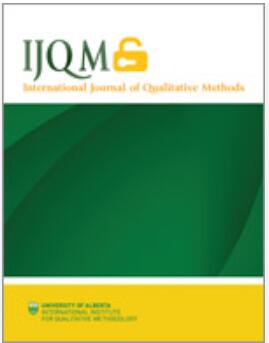The Rug Methodology in Qualitative Studies
IF 3.8
2区 社会学
Q1 SOCIAL SCIENCES, INTERDISCIPLINARY
引用次数: 0
Abstract
This article introduces the Rug Methodology to enhance participation in the qualitative research process. The idea of using rugs to facilitate narratives and expression, and to build reciprocity and activate reflexivity and meaning-making, grew out of a peer-to-peer debate between the authors of this paper on a qualitative research approach for weaving rugs, inventive methods for community action, and drawing as a reflective practice. The article describes the procedure of drawing rugs to encourage people participation. Rugs are everyday objects but they can become a qualitative tool that can be used with in-depth interviews, amplifying the opportunity of collecting participants’ lived experiences, emotions, reflections, and desires. The paper aims to define a framework which connects “to-do activities” with dialogical practices in research and to describe strengths and limitations of drawings rugs in a qualitative research design. Drawings, life events, and stories from the field are described and discussed, showing how everyday objects such as rugs can support expression, participation, reflexivity, and how drawing rugs is suitable for various and vulnerable targets and settings in qualitative studies. Finally, the paper describes the challenges of analysing data from drawings to illustrate lived experiences related to people who stay in rural areas and how they learnt to generate their quality of life.定性研究中的地毯方法论
本文介绍了Rug方法论,以提高在定性研究过程中的参与度。使用地毯来促进叙述和表达、建立互惠、激活反思性和意义创造的想法,源于本文作者之间关于编织地毯的定性研究方法、社区行动的创造性方法以及作为反思实践的绘画的点对点辩论。本文描述了绘制地毯的过程,以鼓励人们参与。地毯是日常用品,但它们可以成为一种定性工具,可以用于深度访谈,扩大收集参与者的生活经历、情感、反思和欲望的机会。本文旨在定义一个框架,将“待做活动”与研究中的对话实践联系起来,并描述定性研究设计中绘图地毯的优势和局限性。该课程描述和讨论了来自该领域的绘画、生活事件和故事,展示了地毯等日常物品如何支持表达、参与、反身性,以及在定性研究中,绘制地毯如何适用于各种脆弱的目标和环境。最后,本文描述了从图纸中分析数据的挑战,以说明与留在农村地区的人有关的生活经历,以及他们如何学会提高生活质量。
本文章由计算机程序翻译,如有差异,请以英文原文为准。
求助全文
约1分钟内获得全文
求助全文
来源期刊

International Journal of Qualitative Methods
SOCIAL SCIENCES, INTERDISCIPLINARY-
CiteScore
6.90
自引率
11.10%
发文量
139
审稿时长
12 weeks
期刊介绍:
Journal Highlights
Impact Factor: 5.4 Ranked 5/110 in Social Sciences, Interdisciplinary – SSCI
Indexed In: Clarivate Analytics: Social Science Citation Index, the Directory of Open Access Journals (DOAJ), and Scopus
Launched In: 2002
Publication is subject to payment of an article processing charge (APC)
Submit here
International Journal of Qualitative Methods (IJQM) is a peer-reviewed open access journal which focuses on methodological advances, innovations, and insights in qualitative or mixed methods studies. Please see the Aims and Scope tab for further information.
 求助内容:
求助内容: 应助结果提醒方式:
应助结果提醒方式:


